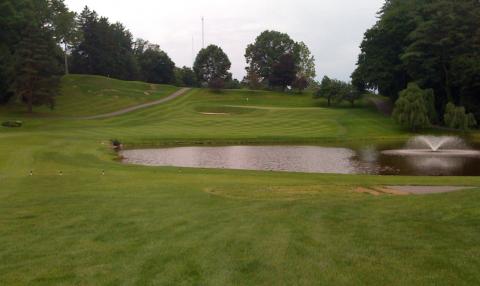In the course of my research for this web site, the modern courses I play outnumber the classic probably 10 to 1. Rare is the Donald Ross or Tillinghast or Mackenzie layout that lies at the heart of a neighborhood of homes. Even though I walked the Country Club of Farmington (CT) course today during qualifying for the state amateur tournament, I felt the tug of the familiar.
I used to play Farmington, which was mostly designed by Devereaux Emmet in the 1920s, as guest of one of its members who moved on to another course some years ago. Fond memories floated by for me at Farmington today. I remembered the layout as keenly as I do that of my home course of the last 24 years. Farmington's rolling terrain, maddeningly small and sloped greens perched on hills, and two of the hardest par 3s in Connecticut are hard to forget.
The par 3 2nd hole, for example, is 190 yards of pure uphill terror, with a three-tiered narrow
The finishing hole, also a par 3, has been softened recently by widening a putting surface that had been shaped something like Betty Boop's waist. The one shotter plays downhill in more ways than one. Missing anywhere but short (who misses short on purpose?) means a lob wedge from thick rough and the possibility of playing fully across the green and down the other side. Getting close is only marginally easier than it was previously, the only compensation for a bogey being the patio and bar lurking above, welcoming the vanquished.


The finishing holes at Farmington begin with a tricky par 4 (bottom) that forces a drive well left of the reachable water. The approach is at an angle to the elevated and horizontal green. The finisher (top) is a par 3 whose green has been widened to accept a few more tee shots, but miss on either side, and your finishing score could widen as well.



